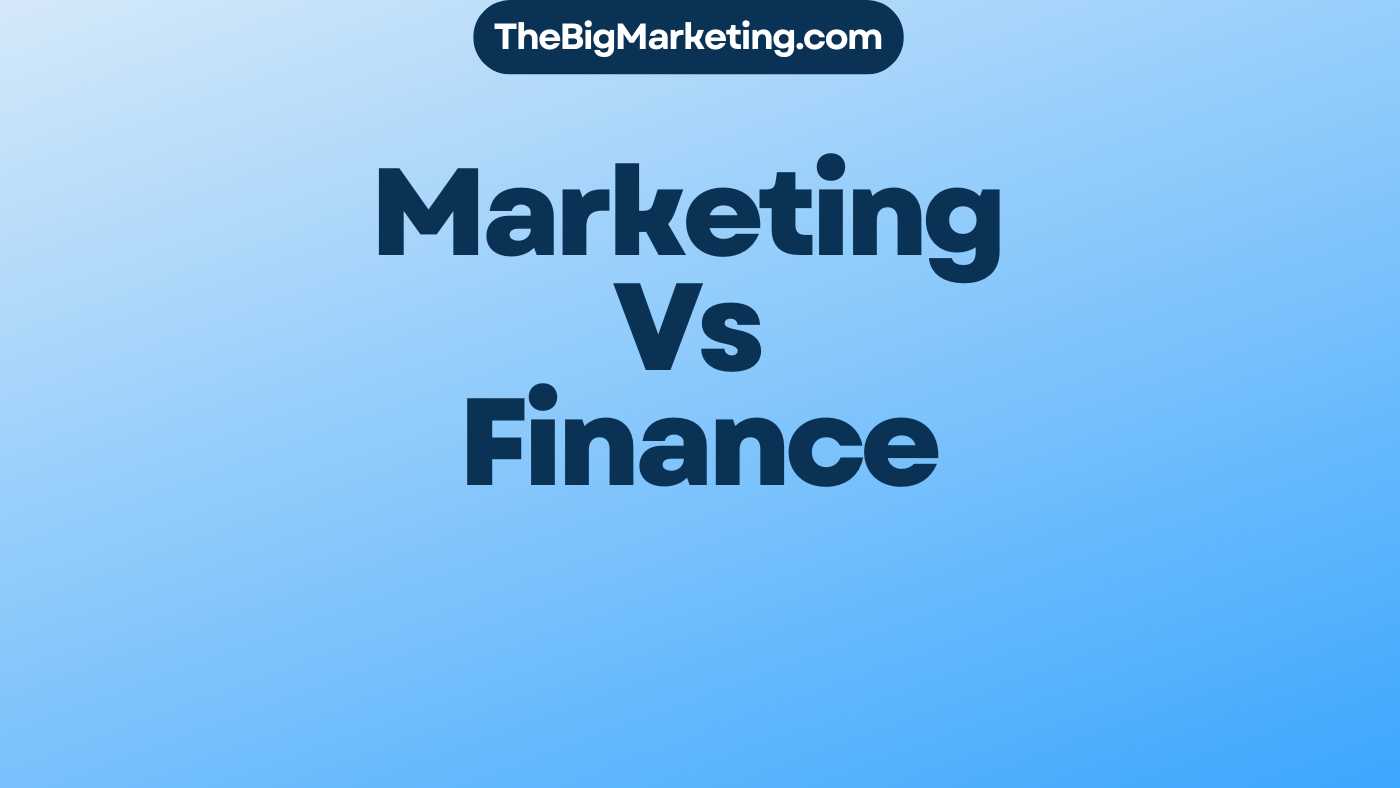In the competitive landscape of business, marketing plays a pivotal role in the success and growth of big companies. However, scaling marketing efforts to meet the needs of a large customer base can present significant challenges. It requires careful strategy and implementation to effectively reach and engage target audiences while maximizing ROI.
Corporate marketing strategies for big companies should encompass various elements to ensure an impactful and scalable marketing approach. This includes investing in automation tools, leveraging social media platforms, creating targeted content, experimenting with different channels, using analytics and data, investing in search engine optimization (SEO), trying online paid advertising, providing excellent customer service, staying up-to-date with industry trends, and continuously evaluating and improving marketing strategies.
To delve deeper into these strategies, let’s explore each element in detail:
Key Takeaways:
- Effective marketing is crucial for the growth and success of big companies.
- Scalable marketing strategies require a combination of various elements.
- Investing in automation tools can streamline operations and enhance marketing performance.
- Leveraging social media platforms helps expand business reach and engage with target audiences.
- Creating targeted content tailored to the ideal customer fosters audience engagement and loyalty.
Invest in Automation Tools
Investing in automation tools can greatly boost your marketing performance and provide a better understanding of your target audience. These tools streamline operations, automate repetitive tasks, and offer valuable analytical data and insights. By leveraging automation, your marketing team can optimize efficiency, maintain quality, and prevent burnout, all while delivering exceptional campaigns.
Automation tools enable marketers to make data-driven decisions by analyzing key metrics and audience preferences. This valuable information allows for personalized and targeted campaigns that resonate with your audience, increasing the chances of better outcomes and improved ROI.
One of the key benefits of automation tools is the ability to automate tasks such as email campaigns and social media scheduling. By automating these processes, you can save time and resources, allowing your team to focus on more strategic initiatives.
Here are some examples of automation tools that can enhance your marketing efforts:
- Email marketing automation tools like MailChimp and HubSpot can help you engage with your audience effectively through personalized email campaigns.
- Social media scheduling tools such as Hootsuite and Buffer enable you to plan and schedule posts across multiple platforms, ensuring consistent and timely content delivery.
- Analytics platforms like Google Analytics and Adobe Analytics provide valuable insights into user behavior, allowing you to optimize your strategies based on data-driven decisions.
With the help of automation tools, you can streamline your marketing operations, understand your target audience better, and maximize your marketing performance. Investing in the right tools can lead to significant improvements in efficiency, productivity, and ultimately, the success of your marketing initiatives.
| Benefits of Investing in Automation Tools | Examples of Automation Tools |
|---|---|
| Enhances marketing performance | Email marketing automation tools: MailChimp, HubSpot |
| Provides a better understanding of the target audience | Social media scheduling tools: Hootsuite, Buffer |
| Streamlines operations and saves time | Analytics platforms: Google Analytics, Adobe Analytics |
Leverage Social Media Platforms
Social media platforms have become essential tools for businesses looking to scale their marketing efforts. These platforms provide a powerful means to reach new audiences, build relationships, and promote products and services effectively. By leveraging social media marketing strategies, companies can significantly increase their business reach and drive growth in today’s digital landscape.
Platforms like Instagram and Facebook offer unique opportunities for businesses to showcase their offerings and connect with consumers. Companies can utilize these platforms to create targeted content that resonates with their target audience, enabling them to build brand awareness, establish authority, and generate leads.
One of the major advantages of using social media platforms is the ability to work with influencers. Collaborating with influencers who have a large following and align with the brand’s values can amplify a company’s reach and drive engagement. Influencers on social media can promote products and services through sponsored content, reviews, and endorsements, helping businesses expand their consumer base and generate sales.
Moreover, social media platforms provide valuable analytics and insights that allow businesses to refine their marketing strategies. By analyzing metrics such as engagement rates, click-through rates, and audience demographics, companies can make data-driven decisions and optimize their social media marketing campaigns for maximum effectiveness.
Research has shown that 74% of people use social media when making purchasing decisions. This statistic highlights the influence and importance of social media as a marketing tool. Businesses that leverage social media platforms effectively can not only increase their business reach but also build trust and credibility with their target audience.
Benefits of Leveraging Social Media Platforms:
- Reach new audiences and expand consumer base
- Build relationships and engage with customers
- Showcase products and services effectively
- Collaborate with influencers for increased reach and engagement
- Utilize data and analytics for data-driven decision-making
- Build trust and credibility with the target audience
In conclusion, leveraging social media platforms is a crucial aspect of a successful marketing strategy. By harnessing the power of social media, businesses can increase their business reach, connect with their target audience, and drive growth in the competitive digital landscape.
Create Targeted Content that Appeals to Your Ideal Customer
When it comes to scaling marketing efforts, creating targeted content that resonates with your ideal customer is paramount. By understanding and addressing the needs, interests, and objectives of your target audience, you can attract a devoted following and deliver personalized messaging that drives engagement and conversions.
One of the key advantages of creating targeted content is the ability to showcase your industry knowledge and expertise while catering to diverse preferences. To effectively engage your audience, it’s essential to leverage various content formats that align with their preferences.
Here are some content formats that can be leveraged:
- Videos: Engage and educate your audience through visually compelling video content.
- Blog posts: Share in-depth articles that provide valuable information and insights.
- Social media posts: Deliver bite-sized content that sparks conversations and encourages social sharing.
- Seminars: Host online or in-person seminars to share expertise and engage with your audience.
- Infographics: Present complex information in a visually appealing and easy-to-understand format.
- Case studies: Showcase your success stories to demonstrate the effectiveness of your solutions.
By diversifying your content types, you can cater to various learning styles and preferences, ensuring your ideal customer receives information in a format that resonates with them.
For instance, if your ideal customer prefers visual content, incorporating more videos and infographics into your marketing strategy can help capture their attention and drive engagement. Similarly, if your target audience prefers in-depth information, producing detailed blog posts and case studies can help establish your brand as a trusted authority in the industry.
Remember, the key is to align your content with the interests, pain points, and aspirations of your ideal customer, delivering value and establishing a connection that keeps them coming back for more.
| Content Format | Benefits |
|---|---|
| Videos | Engage and educate your audience through visually compelling content. |
| Blog posts | Share in-depth articles that provide valuable information and insights. |
| Social media posts | Deliver bite-sized content that sparks conversations and encourages social sharing. |
| Seminars | Host online or in-person seminars to share expertise and engage with your audience. |
| Infographics | Present complex information in a visually appealing and easy-to-understand format. |
| Case studies | Showcase your success stories to demonstrate the effectiveness of your solutions. |
Experiment with Different Channels and Campaigns
Experimenting with various channels and campaigns is an effective strategy for boosting marketing efforts. By testing different advertising platforms, companies can identify the most successful channels for generating leads and driving revenue. These experiments help companies allocate resources effectively and scale marketing initiatives based on data-driven insights.
When it comes to selecting the right channels, it’s crucial to consider the target audience and their preferences. Companies can explore a wide range of channels, such as:
- Email marketing
- Social media advertising
- Influencer collaborations
- Content marketing
- Video marketing
- Search engine marketing
Each channel has its own advantages and target audience. For example, email marketing can be highly effective for nurturing leads, while social media advertising allows for precise targeting and audience reach. It’s important to analyze the results of each channel and make data-driven decisions to optimize marketing efforts.
Marketing Experiments: A Case Study
| Channel | Results |
|---|---|
| Email marketing | High open rates and click-through rates, leading to increased lead generation |
| Social media advertising | Significant engagement and brand visibility, resulting in improved website traffic |
| Influencer collaborations | Expanded reach and brand awareness among the target audience |
| Content marketing | Increased organic traffic and improved search engine rankings |
By experimenting with different channels and campaigns, companies can refine their marketing strategies and allocate resources where they are most effective. It’s important to be open to testing new features and approaches since what works for one business may not work for another.
Next, we’ll explore how analyzing data and utilizing analytics can further optimize marketing efforts.
Use Analytics and Data
Employing analytics and data is essential for efficiently scaling marketing activities. By tracking indicators like website traffic, click-through rates, and conversion rates, companies can optimize campaigns, target specific audiences, and personalize messaging for better results. Analyzing data helps in determining the most effective channels and strategies for generating traffic and conversions, enabling marketers to deploy resources efficiently. Staying informed about the latest trends and developments in the industry also aids in staying ahead of the competition and ensuring ongoing success.
Here is an example of how analytics and data can drive marketing optimization:
| Metric | Key Findings |
|---|---|
| Website Traffic | A significant increase in traffic was observed from specific sources, indicating the effectiveness of referral partnerships. |
| Click-through Rates | Email campaigns with personalized subject lines had higher click-through rates compared to generic ones. |
| Conversion Rates | Landing pages with clear calls-to-action and simplified forms resulted in higher conversion rates. |
By analyzing these data points, marketers can optimize campaigns by focusing on referral partnerships, personalizing email subject lines, and refining landing pages. This data-driven approach ensures that resources are allocated effectively, ultimately leading to better marketing outcomes.
Invest in Search Engine Optimization (SEO)
Search engine optimization (SEO) plays a crucial role in the success of marketing strategies for big companies. By optimizing websites and content for search engines, businesses can increase their online visibility, attract a larger number of organic visitors, and effectively scale their marketing efforts. To achieve these goals, companies need to invest time and effort in various SEO practices.
Keyword Research
Keyword research is a fundamental aspect of SEO. By identifying the keywords and phrases that are most relevant to their industry and target audience, companies can optimize their website content and structure to rank higher in search engine results. Thorough keyword research helps businesses understand the language and search terms their potential customers use and enables them to align their content with user intent.
Website Structure and Content Optimization
Optimizing the structure and content of a website is another crucial step in SEO. Businesses need to ensure that their website is well-organized, with clear navigation and user-friendly URLs. Additionally, they should focus on creating high-quality, engaging, and relevant content that incorporates the identified keywords naturally. By structuring the website effectively and optimizing its content, companies can improve their search engine rankings and attract more organic traffic.
Staying Up-To-Date with Algorithm Updates and SEO Trends
SEO is a dynamic field that constantly evolves with updates to search engine algorithms and changes in user behavior. It is essential for companies to stay up-to-date with these updates and trends to maintain their competitive edge in the online space. By staying informed about the latest developments in SEO, businesses can adjust their strategies accordingly and ensure that their websites remain optimized for maximum visibility.
Continuous Work and Optimization
SEO is not a one-time effort but an ongoing process that requires continuous work and optimization. Companies should regularly monitor their website’s performance, track keyword rankings, and analyze user behavior to identify areas for improvement. By consistently optimizing their SEO strategies and adapting to changes in the online landscape, businesses can maintain their competitive advantage and continue driving organic growth.
Investing in search engine optimization is a crucial component of scaling marketing efforts for big companies. By implementing effective SEO strategies, businesses can increase their website exposure, attract a larger number of organic visitors, and achieve long-term success in the competitive digital landscape.
Try Online Paid Advertising
Online paid advertising is a practical and effective method for scaling marketing initiatives and reaching a wider audience. By investing in sponsored advertisements on platforms like Google Ads and social media, companies can enhance conversions and target specific demographics.
When utilizing online paid advertising, conducting in-depth research is crucial to select the best platforms for maximum return on investment (ROI). Understanding the target demographics and tailoring the advertising campaigns accordingly ensures that the message reaches the right audience.
Tracking and evaluating the performance of sponsored advertisements is essential. By continuously monitoring key metrics, such as click-through rates, conversion rates, and cost per acquisition, companies can optimize their advertising budget and allocate resources wisely.
| Advantages of Online Paid Advertising | Considerations for Effective Implementation |
|---|---|
|
|

Reaching a Wider Audience
Online paid advertising allows companies to expand their reach beyond their existing customer base. By targeting ads based on specific demographics, interests, and behaviors, businesses can extend their brand presence and attract new potential customers. Platforms like Google Ads and social media channels offer a wide range of targeting options to help companies narrow down their audience and maximize the impact of their ads.
Enhancing Brand Visibility
Investing in online paid advertising can significantly boost brand visibility. Display ads, search ads, and social media sponsored posts can increase brand exposure and help companies establish themselves as industry leaders. Strategic placement and compelling ad copy can capture the attention of potential customers, resulting in improved brand recognition and recall.
Targeting Specific Demographics
One of the key advantages of online paid advertising is the ability to target specific demographics. By customizing ads based on factors such as age, location, interests, and online behavior, companies can reach the most relevant audience for their products or services. This targeted approach ensures that marketing efforts are focused on individuals who are more likely to convert, increasing the overall effectiveness of the advertising campaigns.
Driving Conversions
The primary goal of online paid advertising is to drive conversions, whether it’s sales, sign-ups, or downloads. By creating compelling ad content, using persuasive calls-to-action, and directing users to relevant landing pages, companies can optimize their chances of converting potential customers into paying customers. Continuous monitoring and optimization of ad campaigns based on performance data can further enhance conversion rates and maximize return on investment.
Providing Excellent Customer Service
To effectively scale marketing efforts, delivering excellent customer service is paramount. By prioritizing personalized experiences and promptly addressing customer inquiries and concerns, companies can enhance customer satisfaction and build brand loyalty. Additionally, continuously improving products or services based on valuable customer feedback allows companies to meet evolving customer needs and expectations.
One effective approach to fostering customer loyalty is through the implementation of loyalty programs and rewards. These initiatives incentivize repeat purchases and reinforce the relationship between the company and its customers. By offering exclusive benefits and personalized offers, companies can show their appreciation for customer support while encouraging continued engagement with the brand.
Furthermore, actively seeking customer input and adapting to their recommendations demonstrates a commitment to customer satisfaction. Conducting customer surveys, feedback sessions, and monitoring social media platforms are effective means to collect insights and identify areas for improvement. By implementing customer-driven changes, companies can foster a customer-centric culture that enhances customer loyalty and drives business growth.
Benefits of Providing Excellent Customer Service:
- Enhanced customer satisfaction and loyalty
- Positive word-of-mouth and brand advocacy
- Increased customer retention and repeat purchases
- Improved brand reputation and trust
- A competitive edge in the market
Customer Service Best Practices:
To deliver exceptional customer service, companies should consider implementing the following best practices:
- Active and attentive listening: Listening to customer needs and concerns attentively and empathetically.
- Quick response: Promptly addressing and resolving customer inquiries and issues to prevent customer dissatisfaction.
- Personalization: Tailoring interactions and solutions to meet individual customer preferences and requirements.
- Continuous improvement: Actively seeking customer feedback and using it to improve products, services, and overall customer experience.
- Empowered support team: Providing customer service representatives with the authority and resources to resolve issues effectively and efficiently.
| Benefits | Customer Service Best Practices |
|---|---|
| Enhanced customer satisfaction and loyalty | Active and attentive listening |
| Positive word-of-mouth and brand advocacy | Quick response |
| Increased customer retention and repeat purchases | Personalization |
| Improved brand reputation and trust | Continuous improvement |
| A competitive edge in the market | Empowered support team |
Conclusion
Scaling marketing for big companies requires a combination of strategies, each playing a crucial role in enhancing brand presence and driving growth in the competitive market landscape.
Investing in automation tools streamlines operations, allowing marketers to focus on strategic initiatives and improve marketing performance. Leveraging social media platforms enables companies to reach and engage with new audiences, while creating targeted content appeals to the ideal customer and maintains their interest.
Experimenting with different channels and campaigns helps identify the most effective methods for lead generation, while using analytics and data allows companies to optimize campaigns, personalize messaging, and stay ahead of the competition. Investing in SEO increases website exposure and attracts organic visitors, while online paid advertising targets specific demographics and maximizes ROI.
To ensure success, big companies must also provide excellent customer service, prioritize personalized experiences, and continuously evaluate and improve marketing strategies based on industry trends and customer feedback. By implementing these strategies, big companies can effectively scale their marketing efforts and achieve their growth objectives in today’s competitive market landscape.
FAQ
How can big companies scale their marketing efforts?
Big companies can scale their marketing efforts by investing in automation tools, leveraging social media platforms, creating targeted content, experimenting with different channels, using analytics and data, investing in SEO, trying online paid advertising, providing excellent customer service, staying up-to-date with industry trends, and continuously evaluating and improving marketing strategies.
How can automation tools help in scaling marketing?
Automation tools streamline operations, automate tasks like email campaigns and social media scheduling, provide analytical data and insights, and enable marketers to make data-driven decisions and customize campaigns based on audience preferences.
How can social media platforms contribute to scaling marketing initiatives?
Social media platforms allow companies to reach new audiences, build relationships, and promote products and services through targeted content and advertising campaigns. Platforms like Instagram and Facebook enable companies to showcase their offerings, work with influencers, and expand their consumer base.
How can companies create targeted content to appeal to their ideal customers?
Companies can create tailored content that addresses the needs, interests, and objectives of their target audience. Various content formats, such as videos, blog posts, social media posts, seminars, infographics, and case studies, can be leveraged to engage and maintain audience interest.
Why is experimenting with different channels and campaigns important for scaling marketing efforts?
Experimenting with different channels and campaigns helps companies identify the most successful channels for generating leads and driving revenue. By testing different advertising platforms like email marketing and LinkedIn advertising, companies can allocate resources effectively and scale marketing initiatives based on data-driven insights.
How can companies use analytics and data to optimize their marketing campaigns?
By tracking indicators like website traffic, click-through rates, and conversion rates, companies can optimize campaigns, target specific audiences, and personalize messaging for better results. Analyzing data helps in determining the most effective channels and strategies for generating traffic and conversions.
What role does search engine optimization (SEO) play in scaling marketing efforts?
SEO is critical for increasing website visibility, attracting more organic visitors, and scaling marketing efforts. Companies can optimize their websites and content for search engines by investing time and effort in keyword research, optimizing website structure and content, and staying updated with the latest algorithm updates and SEO trends.
How can online paid advertising help in scaling marketing initiatives?
Online paid advertising allows companies to enhance conversions and target specific demographics by investing in sponsored advertisements on platforms like Google Ads and social media. Conducting in-depth research, tracking performance, and continuously evaluating campaigns helps allocate advertising budgets wisely and optimize conversions.
Why is delivering excellent customer service crucial for scaling marketing?
Prioritizing personalized experiences, promptly addressing customer inquiries and concerns, and continuously improving products or services based on customer feedback helps build brand loyalty and generate positive word-of-mouth. Loyalty programs and rewards further incentivize customer loyalty and strengthen the relationship between the company and its customers.
What are the key strategies for scaling marketing efforts in big companies?
Implementing strategies such as investing in automation tools, leveraging social media platforms, creating targeted content, experimenting with different channels, using analytics and data, investing in SEO, trying online paid advertising, providing excellent customer service, staying up-to-date with industry trends, and continuously evaluating and improving marketing strategies can effectively scale marketing efforts in big companies.






